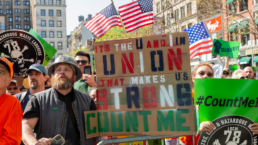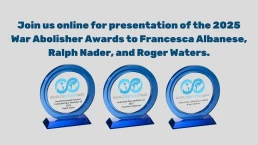By Left Voice
After decades of decline and stagnation, U.S. Labor stands at a crossroads. On one side is the same old path of the labor bureaucracy that has sold its soul to the Democratic Party and which has no vision for a renewed labor movement beyond further entrenching itself in the U.S. state. On the other side are the thousands of new young activists and workers marching to the beat of a new grassroots unionism who have the potential to build a national movement to organize millions of workers from below. The formation of the Amazon Labor Union (ALU) and the victory at the Amazon warehouse in Staten Island, as well as the hundreds of new Starbucks stores that have formed unions in the last four months show the power and potential of rank-and-file organizing.
It is in this context that the biggest Labor Notes conference ever began today in Chicago. More than 4,000 workers, unionists, activists, labor journalists, and scholars are coming together to debate the strategies and tactics for taking the labor movement forward. And the outcome of those debates has never been more relevant. As part of this important discussion, we offer suggestions for how to make the most of this new moment in order to build a labor movement that relies on its own forces and develops the revolutionary potential of the powerful, multiethnic U.S. working class.

This year’s Labor Notes conference comes just one week after the AFL-CIO held its own national convention in Philadelphia. Attended by thousands of staffers and bureaucrats, the AFL-CIO convention, complete with a speech by President Biden, was a chauvinistic, flag-waving advertisement for everything wrong with the U.S. labor movement today. While the convention provided a platform for the President, it made no room for the new wave of young grassroots union activists from Amazon, Starbucks, or Apple who are making headlines every day across the country. This failure to include even one representative from this new movement clearly shows the gap between this dynamic new labor movement and the ossified and bureaucratic leadership of the AFL-CIO.
Recent Posts
Politicians Are Betraying Gen Z On Climate
July 10, 2025
Take Action Now While Gen-Zers thrift, knit, crochet, and find other ways to reduce our footprints, Trump and the GOP are greenlighting more climate…
Trump’s Deportation Threat Against Zohran Mamdani Is Shameful
July 10, 2025
Take Action Now In only half a year of Donald Trump’s presidency, he and his allies have turned deportation into an explicitly political threat…
Teachers Union Votes To Cut Ties To The Anti-Defamation League
July 10, 2025
Take Action Now In a momentous vote, the National Education Association voted to cut all ties with the Anti-Defamation League. The reason? “Despite…
2025 War Abolisher Awards Go To Albanese, Nader, Waters
July 9, 2025
Take Action Now The purpose of the awards is to honor and encourage support for those working to abolish the institution of war itself.By World…




